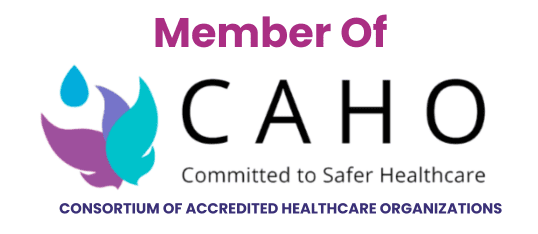Breast Cancer is a disease that occurs when cells in breast tissue keep reproducing in an uncontrolled manner and become abnormal in shape and size. Breast cancer is the most common cancer in India overall accounting for 14% of all cancers newly diagnosed in the country. Among women, breast cancer is by far the most common cancer. Approximately 27.7% of all newly diagnosed cancers in a year among Indian women arise in the breast. Typically, cancer can arise from any part of the breast.
As the tumour grows, it invades surrounding healthy breast tissue and spreads to lymph nodes under the arms.

Breast cancer symptoms
Breast cancer may not cause any symptoms in its initial stages. A tumour may be too small to be felt in many cases, but on a mammogram, an abnormality can still be detected. Usually, the first sign is a new lump in the breast. But not all lumps are cancer.
The most common symptoms include:
- A new breast lump that feels different from surrounding tissue
- Pitted, red skin over your breast
- Swelling in your breast
- Bloody discharge from your nipple
- Scaling, peeling, or flaking of skin on your breast or nipple
- An unexplained or sudden change in the size or shape of your breast
- Inversion of nipple
- Swelling or a lump under your arm
But just because you have these symptoms doesn’t mean you certainly have breast cancer. For instance, a benign cyst can cause pain in your breast or a breast lump. Still, you should see your doctor for further examination and testing.
Histological Types of Breast Cancer
- Ductal carcinoma
- Ductal carcinoma in situ (DCIS)
- Invasive lobular carcinoma
- Inflammatory breast cancer
- Paget’s disease of the breast
- Various types of sarcomas like cystosarcoma phyllodes, angiosarcoma etc.
Risk factors
Here are some of the factors that are associated with an increased risk of breast cancer.
- Being female
- Increasing age
- A personal history of breast cancer
- A family history of breast cancer
- Inherited cancer genes
- Exposure to radiation
- Obesity
- Beginning your period before age 12
- Starting menopause at an older age
- Having your first child after age 30
- Women who have never been pregnant
- Postmenopausal hormone medications
- Alcohol consumption
Breast Self Examination
How to do a Breast Self Examination?
Breast Self Examination is done by oneself. It should be done at least once a month. Before performing Breast Self Examination, ensure your privacy and follow the steps described below.

Step 1
Expose your breasts and look in the mirror with arms on your hips. Check size, shape and colour of breasts. Compare both breasts and look for any asymmetry. Repeat the procedure with arms elevated
Step 2
Look for any nipple discharge, if present note the colour and quantity.
Step 3
- Lie down and palpate your breast with the flat of your fingers, feeling for any hard mass or tissue thickening. Move your hands on your breast in a circular motion going from inside to out (start from the nipple and make bigger outward circles).
- Breast can also be palpated while showering and applying soap.
If you notice any abnormality, don’t panic. Benign or non-cancerous breast lumps are more common than a cancerous breast lump. Consult your family physician or a specialist and seek their guidance.
Preventive measures
As of now, there are no preventive measures for breast cancers. Regular clinical examination after the age of 40 years and use of screening mammograms helps to detect cancers in an early stage which results in better chances of cure. Women with a history of breast cancer in the family should get evaluated or presence of breast cancer-causing genes like BRCA 1, BRCA 2, p53 etc. If any such gene mutation is present, they may benefit from preventive breast surgery and more rigorous screening.
Authored By Dr. M. Banupriya MBBS, MDRT, FIAMS, Ph.D, CCEPC (Palliative care), Consultant Oncologist



